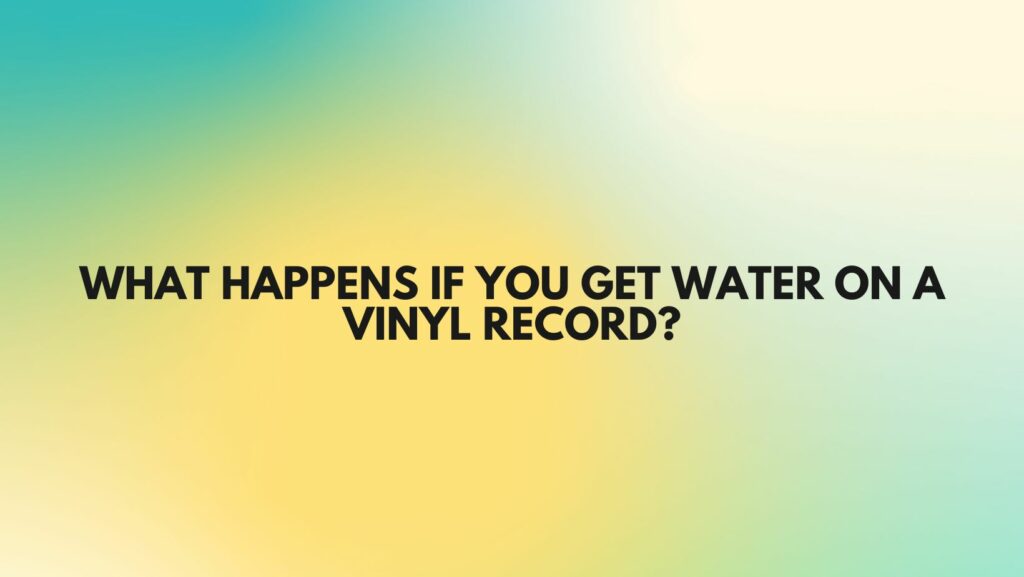Vinyl records, cherished for their warmth and authenticity, stand as enduring symbols of musical craftsmanship and cultural heritage. Yet, despite their resilient composition, vinyl records remain susceptible to the perils of water exposure. In this exploration, we unravel the consequences of water meeting vinyl, shedding light on the transformative effects that ensue.
The Encounter: Water and Vinyl The collision of water with a vinyl record initiates a delicate dance between resilience and vulnerability. Vinyl records, crafted from polyvinyl chloride (PVC), possess remarkable durability, capable of withstanding the rigors of time and use. However, when water infiltrates the grooves of a record, it sets in motion a series of chemical and structural changes that can mar its sonic fidelity and aesthetic appeal.
Warping: One of the most immediate and visible effects of water on vinyl records is warping. When exposed to moisture, vinyl undergoes expansion unevenly, causing the record to warp or bend. This distortion alters the surface geometry, rendering the record prone to skipping, distortion, and uneven playback. Warping not only compromises the listening experience but also diminishes the collectible value of the record.
Mold and Mildew: In damp and humid environments, water provides an ideal breeding ground for mold and mildew to proliferate on vinyl records. Mold growth not only detracts from the record’s aesthetic appeal but can also pose health risks to individuals handling them. The presence of mold necessitates meticulous cleaning and restoration efforts to salvage the integrity of the record and mitigate further damage.
Surface Degradation: Prolonged exposure to water can result in surface degradation, manifesting as cloudiness, discoloration, or delamination of the vinyl. These alterations not only compromise the visual allure of the record but also impede its playback quality and sonic fidelity. Surface degradation serves as a stark reminder of water’s transformative impact on vinyl’s tactile and auditory dimensions.
Mitigating the Damage: While water damage poses a formidable threat to vinyl records, prompt and proactive measures can help mitigate its impact and preserve the integrity of cherished collections. In the event of water exposure, remove affected records from the source immediately and allow them to air-dry on a flat, non-abrasive surface. Avoid subjecting records to direct heat or sunlight, as these can exacerbate warping and surface damage.
Prevention remains the cornerstone of safeguarding vinyl records against water-related woes. Storing records in a controlled environment with stable humidity levels and investing in high-quality record sleeves and storage solutions provide essential safeguards against moisture infiltration and environmental fluctuations.
Conclusion: The encounter between water and vinyl records unveils a nuanced narrative of resilience and vulnerability, resilience in vinyl’s enduring allure and vulnerability in its susceptibility to environmental perils. As custodians of vinyl’s legacy, let us remain vigilant in our efforts to protect and preserve these cherished artifacts for generations to come. Through knowledge, vigilance, and care, we can navigate the waters of preservation, ensuring that vinyl records continue to resonate with the timeless echoes of music’s past, present, and future.

